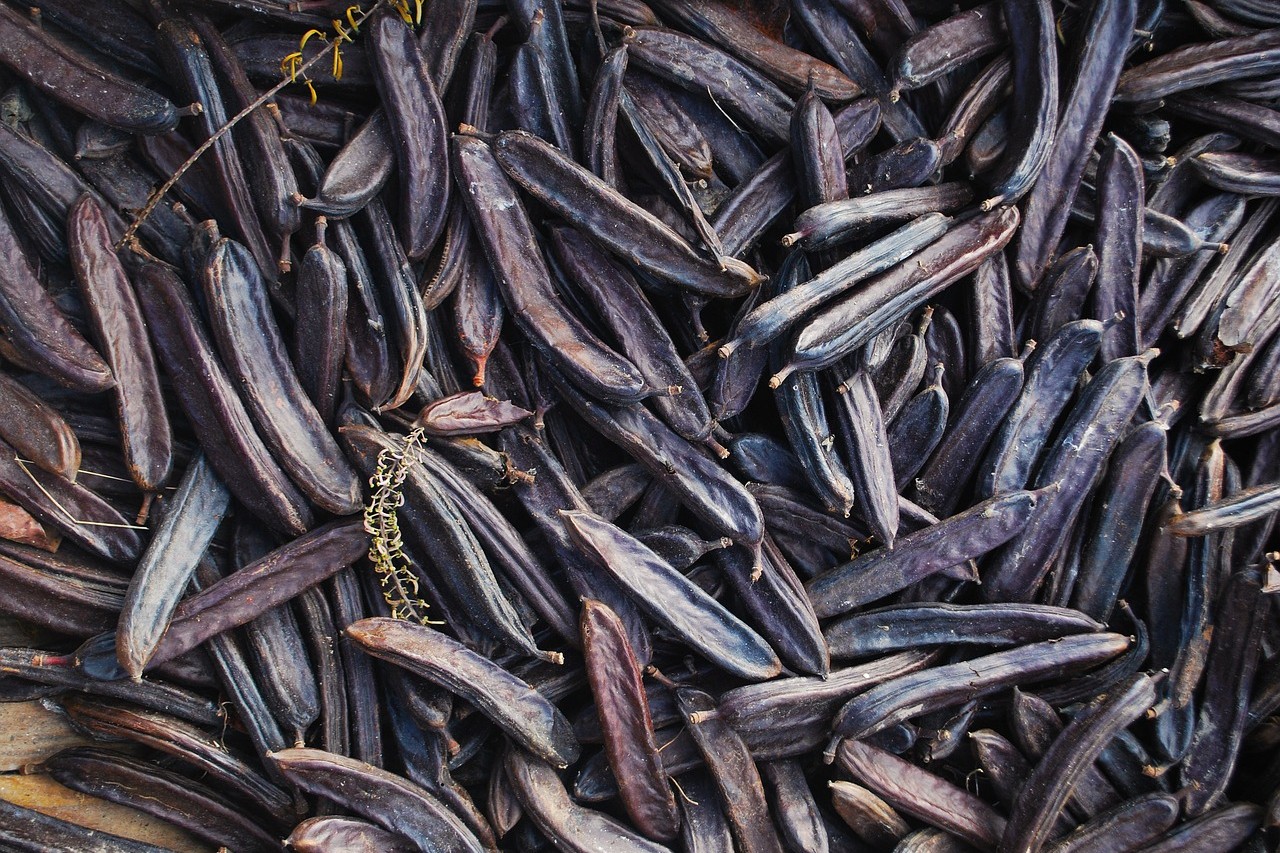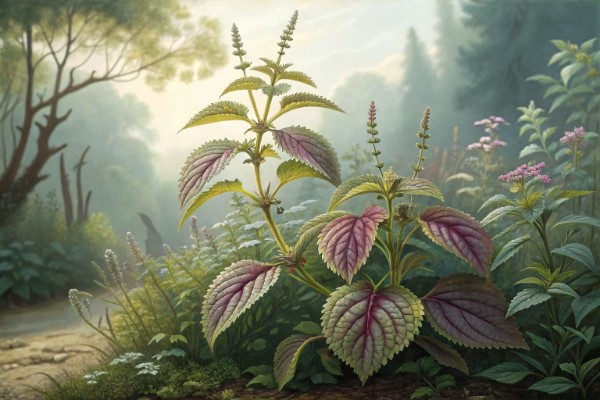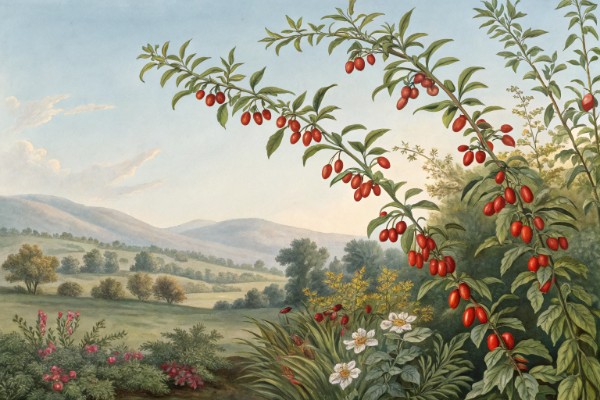Growing Carob at Home: How to Grow and Care for Carob Trees

Growing Carob
Growing carob starts with soaking fresh seeds overnight, followed by planting them in sandy, well-drained soil. Provide full sun and minimal water—carob thrives in dry conditions similar to Mediterranean climates. With patience and simple care, you'll soon savor the satisfying sweetness of your homegrown carob pods; read on for easy tips to make it happen.
I plant carob, Ceratonia siliqua, for flavor, shade, and the quiet thrill of harvesting pods that taste like sun-baked cocoa and figs. Growing Carob rewards patient gardeners with an evergreen workhorse that shrugs off heat and poor soils once established.
Why Carob, and why now
It thrives where summers run hot and rain forgets your address, yet it still gives generously. The pods roast into a rich, caffeine-free powder, and the seeds yield the famous locust bean gum used in ice cream stabilizers.
“Carob trees are among the most drought-resistant cultivated fruit trees.” Fruits of Warm Climates, J. Morton.
FAOSTAT reports roughly 160,000 metric tons of pods produced worldwide in recent years, led by Spain, Portugal, Italy, Morocco, and Greece. That scale tells me this is a proven crop, not a curiosity.
Climate, exposure, and siting
Target USDA Zones 9 to 11, with brief dips to 20 F minus 6 C tolerated by mature trees, though young trees can burn at 28 to 30 F minus 2 to minus 1 C. Full sun is nonnegotiable, and a warm wall or courtyard boosts fruiting in marginal climates.
Pick a spot with air flow and room for a 30 to 50 ft 9 to 15 m canopy over time. Carob handles coastal conditions and limey soils, and it dislikes cold, soggy ground.
Soil preferences and planting
Give it sharply drained soil, sand or gravelly loam is ideal, with pH 6.5 to 8.5, and it tolerates limestone without complaint. I plant slightly high, mound the root collar by 1 to 2 inches 2.5 to 5 cm, and avoid burying the flare.
Mix in coarse compost if structure is poor, then stop. This species sits in the legume family yet does not reliably fix nitrogen, so skip the myth and feed sparingly.
Seed vs grafted trees
Seedlings are slow, 6 to 8 years to fruit, sometimes longer, and sex is a dice roll. Grafted trees usually bear in 3 to 4 years and give you known pod quality.
How I start seeds for Growing Carob
- Scarify each seed by nicking the coat with a file, or pour hot water just off the boil over them and soak 24 hours.
- Sow in tall, deep containers 10 to 14 inches 25 to 35 cm to protect the taproot, then pot up fast, because spiraled roots stunt trees for life.
Keep warm at 70 to 80 F 21 to 27 C and barely moist. I up-pot before roots hit the bottom, no exceptions.
Pollination and tree sex
Carob is usually dioecious, which means separate male and female trees, though some hermaphrodite selections exist. I plant one male for 8 to 10 females, or a hermaphrodite plus a male for insurance in still air sites.
Flowers open late summer into fall, then pods take about 10 to 12 months to ripen. That delayed gratification surprises new growers the first year.
Water and nutrition
Establishment watering decides success, give 5 to 10 gallons 19 to 38 L weekly in the first summer, then taper once roots run deep. Mature trees prefer deep, infrequent irrigation in heatwaves, I water monthly in my 9b summers if we get no rain.
Skip heavy nitrogen, it fuels leaves and starves flowers. On high pH soils I treat iron chlorosis with chelated Fe EDDHA in late spring, which greens the canopy fast.
Training and pruning
I train a single trunk to 3 to 4 ft 0.9 to 1.2 m, then build 3 to 5 scaffold limbs with good spacing. Prune lightly after the coldest period passes, and remove water sprouts before they thicken.
Carob wood sets hard and brittle with age. Early shaping prevents storm splits later.
Fruiting rhythm, yield, and timing
Pods ripen when uniformly chocolate brown and hard, then they snap, not bend. In my yard, flowers scent the air in September, and I harvest the following late summer.
A mature female can produce 100 to 200 kg 220 to 440 lb of pods in on-years, with alternate bearing common. FAO and Mediterranean research summaries.
Pests, diseases, and prevention
- Carob moth Ectomyelois ceratoniae targets pods, so harvest promptly and keep the ground clean of drops.
- Soft scales bring sooty mold, knock them back with horticultural oil in late winter, then encourage lacewings and parasitoids with mixed flowering plants.
- Root rots love heavy soils, fix drainage, plant high, and avoid summer overwatering.
I bait for ants if they farm the scales. Good airflow and sun keep most trouble at bay.
Harvest, curing, and kitchen use
Cut or snap pods fully brown, then dry to leathery crispness on racks until seeds rattle, about 8 to 10 percent moisture. I roast at 300 F 150 C for 12 to 20 minutes until the house smells like toasted caramel.
Cool, then grind for baking or infusions, and store airtight. Carob has no caffeine or theobromine, which makes it handy for kid treats and dog biscuits, though the sugar is real, so balance recipes.
Containers and small-space Growing Carob
Can you do it, yes, should you, only if you accept modest yields. Use the tallest pot you can find 50 to 100 L minimum, a gritty mix, and root prune on a two to three year cycle.
Pick a compact hermaphrodite if available. Move the container under eaves during cold snaps below 30 F minus 1 C.
Buying guide, costs, and what to ask
- Choose grafted, named selections for known pod quality and sex, or a verified hermaphrodite if space is tight.
- Ask the nursery about rootstock, chill tolerance, and bloom timing in your region.
- Expect 5 to 15 gallon trees to run 60 to 180 USD 55 to 165 EUR, and inspect for a straight trunk and undistorted roots.
Order in late winter for spring planting in cool areas, or plant in fall in frost-free zones. A simple deep-soak hose and a bag of coarse compost usually beat fancy gadgets here.
Fertilizer, amendments, and irrigation picks I trust
- Low N organic feed like 4-3-2 at half rate in spring, then stop.
- Iron chelate EDDHA if leaves yellow with green veins on alkaline soils.
- Mulch with 2 to 3 inches 5 to 7.5 cm of wood chips, keep 6 inches 15 cm off the trunk.
- Inline emitter or a simple bubbler for rare, deep irrigations in heat spikes.
Quick troubleshooting for Growing Carob
- Leaves yellow, soil pH high, apply EDDHA iron and add coarse compost, then water deeply.
- Flowers, no pods, you may lack a male or pollinators, add a male tree or shake branches on warm afternoons during bloom.
- Pods drop early, overwatering or sudden heat swings, shift to deeper, less frequent irrigation and mulch.
- Tip dieback after cold, wait until spring growth reveals live wood, then cut clean to green tissue.
Companions and drought guild ideas
I underplant with rosemary, thyme, santolina, and California poppy, which pull beneficials and keep irrigation lean. Avoid thirsty lawns at the dripline, roots resent constant wet feet.
Comparisons and smart alternatives for hot, dry gardens
- Jujube, crisp, sugary fruit, similar drought poise, faster to crop.
- Pomegranate, handles alkalinity, sets fruit with minimal fuss.
- Fig, forgiving and productive, but needs bird netting in many areas.
- Mulberry, fast shade and heavy crops, requires pruning discipline.
I pair carob with one of these to stagger harvests and spread risk. The mix keeps the pantry interesting.
Field notes from my trees
The first autumn bloom smells faintly of honey and warm bread, and bees work it on still afternoons. I learned to shake a limb gently during warm spells, and set jumped the next year.
Pods store beautifully, a sealed bin in a cool room holds for a year. On rainy weeks I dry them near a pilot-lit oven, low and slow, until they clack like castanets.
Fast facts and earned wisdom
- Carob seeds inspired the goldsmith’s carat measure, later standardized at 200 mg, a tidy bit of horticultural lore.
- Bloom in fall, ripen the following late summer, plan irrigation and labor around that quirk.
- Carob tolerates salty spray and lime, which makes it a coastal ally on harsh sites.
Sources I trust and why they matter
Fruits of Warm Climates by Julia Morton remains the most readable overview, and her drought observation matches everything I see in the field. FAOSTAT production data frame carob as a serious crop, not a fad, which helps when convincing a nursery to stock proper cultivars.
“Global carob production is concentrated in the Mediterranean basin.” FAO data summaries and Mediterranean agronomy bulletins.
University extension notes from California, Cyprus, and Israel emphasize drainage, light feeding, and careful establishment. That trifecta has never failed me when Growing Carob at home.
Cheatsheet: Homegrown Carob Tree Success
🌞 Site & Soil
- Full sun — 8+ hours daily
- Well-drained, alkaline (pH 7-8) soil
- Tolerates rocky, poor ground; hates wet roots
🌱 Planting Steps
- Soak seeds 24h in warm water
- Scarify seeds (nick seed coat)
- Plant 1" (2.5 cm) deep in pots with sandy mix
- Germinate at 68–86°F (20–30°C), 2-4 weeks
- Transplant young trees after last frost, 15 ft+ (5 m) apart
- Male & female trees needed for pods
💧 Water & Feeding
- Water deeply, infrequently; allow soil to dry
- Established trees resist drought
- No fertilizer needed if soil is poor, compost starter helps
✂️ Pruning & Care
- Prune for structure in year 1–2
- Remove suckers & dead wood annually
- Mulch to retain moisture, suppress weeds
🌡️ Climate & Facts
- Thrives in USDA zones 9–11
- Withstands temps: 22°F (–5°C) minimum
- Heat, salt, wind tolerant
- Often bears pods in 6–7 years; lives 100+ years
🌿 Nutrition & Uses
- Pods rich in fiber, antioxidants, calcium
- Grind for flour, natural sweetener
- No caffeine; safe for children
- High yield: up to 200 lb (90 kg) per mature tree/year
🛠️ Tools and Products You'll Need
- Carob seeds or saplings
- Sharp pruners
- Scarification tool or sandpaper
- Sandy or cactus potting mix
- Soaking bowl
- Gloves (for transplanting)
- Mulch
Frequently Asked Questions About Growing Carob
What soil conditions are ideal for growing carob?
Carob roots thrive in dry, gritty soils that drain freely—picture sun-baked Mediterranean hillsides, not damp British gardens. Aim for sandy-loam textures, slightly alkaline or neutral in pH, to keep your carob vigorous and content.
How much sunlight does a carob tree require?
Your carob demands the full blaze of the sun—no half-measures here. Allow at least 6 to 8 hours of direct sunlight daily to awaken its full Mediterranean temperament and encourage abundant pod production.
Can carob plants withstand drought conditions?
Drought doesn't intimidate a thriving carob; these trees evolved to sip water sparingly. Once established, your carob tree can flourish with just occasional watering. Resist the urge to pamper—frequent moisture weakens its innate resilience.
How long before a carob tree produces pods?
Patience is key; a carob tree typically requires 6 to 8 years to bear its first pods. Like a slow-cooked stew, the rewards of carob cultivation unfold steadily, but the eventual yield is deeply satisfying.
Should carob trees be pruned regularly?
Annual pruning invigorates your carob, promoting airflow and sunlight penetration to its inner branches. Perform a gentle, selective cleanse each spring, removing crossed limbs and opening the crown to keep your tree robustly productive.
Are carob trees vulnerable to diseases or pests?
Carob trees rarely succumb to pests or diseases; however, watch diligently for scale insects or aphids. Intervene early with simple, organic treatments such as neem oil sprays or insecticidal soaps, allowing your carob to resume its healthy vigor uninterrupted.
Growing Carob is a patient gardener’s reward. With a bit of grit and the right spot, this tree offers more than just shade and resilience—it gives you something rare and sweet. Well-drained soil, plenty of sun, and a little tough love are all it takes to coax out those glossy pods. Don’t rush it; carob trees move at their own pace, but the payoff—chocolate-scented blossoms, drought tolerance, and nutrient-rich pods—is worth the wait. If you’re looking to expand your edible orchard, consider pairing your carob with other hardy crops, like apricot trees or mulberry bushes. Growing Carob at home isn’t flashy, but it’s deeply satisfying—like all the best things pulled from honest earth.



